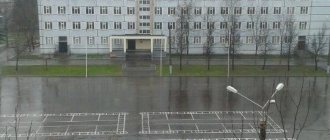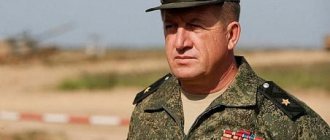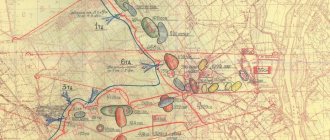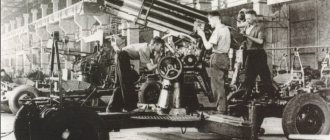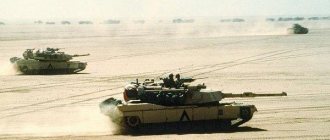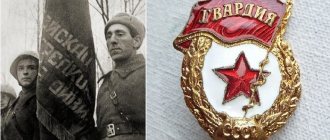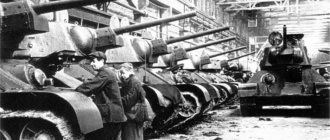Nikolay Starikov
Source: warfor.me On March 11, 1943, the 30th Ural Volunteer Tank Corps was formed in the Urals, which was later renamed the 10th Guards Tank Corps.
The tanks for this corps were built with voluntary contributions from the workers of the Urals, and the corps personnel (9,661 people) were also recruited from them. In less than two years of the Great Patriotic War, soldiers of the Ural Tank Corps destroyed and captured: 1,110 tanks and self-propelled artillery units (SPG) of the enemy, 649 aircraft, 2,100 armored vehicles, 1,100 guns, 589 mortars, 15,211 vehicles, 1,747 motorcycles, 2,125 machine guns, 293 warehouse (with ammunition, food, fuel and equipment), 3 armored trains, 166 steam locomotives, 33 trains with military equipment, killed 94,620 enemy soldiers and officers, and captured 44,752 Nazis. In the fall of 1945, the Ural Corps was renamed the 10th Guards Ural-Lvov Tank Division, which was disbanded only in 2009.
HISTORY OF CREATION
The Special Ural Volunteer Tank Corps named after I.V. Stalin (February 26, 1943) is a unique military formation of the Red Army, which appeared in 1943 on the initiative of the Ural workers.
The idea of creating a tank corps from volunteers - residents of the Urals (who produced these same tanks) arose in 1942 during the battles for the city of Stalingrad. The workers of the Urals warmly supported this idea, and the Supreme Commander-in-Chief, J.V. Stalin, also liked it.
At the beginning of 1943, an article “Tank Corps Above Plan” appeared in the Ural Worker newspaper, in which it was written that tank manufacturers had undertaken to contribute part of their salaries to equip the tank corps with weapons and all the necessary uniforms. The formation of a new tank corps took place literally instantly. Applications for service in the Ural Corps were written by 115 thousand people (12 times more than required) - residents of the Sverdlovsk, Chelyabinsk and Molotov (Perm) regions. After careful selection, 9,661 people were accepted into the corps. By order of the People's Commissar of Defense of the USSR dated March 11, 1943, the corps was given the name - 30th Ural Volunteer Tank Corps (UDTK). The corps commander was Major General of Tank Forces G.S. Rodin (who returned to duty after being seriously wounded). The UDTK took part in its first battle on July 27, 1943 during the Battle of Kursk as part of the 4th Tank Army. And just three months later, by order of the People's Commissar of Defense of the USSR No. 306 dated October 26, 1943, the 30th Ural Volunteer Tank Corps became a guards corps and began to be called: the 10th Guards Ural Volunteer Tank Corps. The Germans nicknamed the Ural Corps: “Schwarzmesser Panzer-Division” (German: Schwarzmesser Panzer-Division), that is, “Tank Division of Black Knives”.
Sharpened to the sharpness of a razor blade, the Zlatoust steel of the “black knives” perfectly cut the throats of Hitler’s warriors, and they really didn’t like it. The Wehrmacht soldiers, when meeting in battle with the soldiers of the Ural Corps (subconsciously), felt like sheep that were brought to the slaughterhouse for slaughter.
On July 27, 1944, for successful participation in the battles for the liberation of the Ukrainian city of Lvov, the UDTK received the honorary name of Lvov. The final name of the corps was the 10th Guards Ural-Lvov Red Banner Order of Suvorov and Kutuzov Volunteer Tank Corps. The Corps became a phenomenally effective unit. For his distinctions in battles, he was mentioned 27 times in the orders of the Supreme High Command. The massive heroism of volunteers is evidenced by 54 orders attached to the banners of the corps and its units.
Outstanding results were shown by 12 corps soldiers (tank combat aces), who (acting together with their well-coordinated crews) destroyed 20 or more enemy armored vehicles. Lieutenant M. Kuchenkov's guard has 32 enemy armored units, Captain N. Dyachenko's guard has 31, Sergeant N. Novitsky's guard has 29, Junior Lieutenant M. Razumovsky's guard has 25, Lieutenant D. Maneshin's guard has 25. 24, the guard of captain V. Markov and the guard of senior sergeant V. Kupriyanov - 23 each, the guard of sergeant major S. Shopov and the guard of lieutenant N. Bulitsky - 21 each, the guard of sergeant major M. Pimenov, the guard of lieutenant V. Mocheny and the guard of sergeant V. Tkachenko - 20 armored units.
During the Great Patriotic War, UDTK soldiers were awarded 42,368 orders and medals, 27 soldiers and sergeants became full holders of the Order of Glory, and 38 corps guards were awarded the title of Hero of the Soviet Union.
AFTER THE GREAT PATRIOTIC WAR
After the end of the Great Patriotic War, the 10th Guards Ural-Lvov Tank Division (1945) became part of the 3rd Combined Arms Red Banner Army of the Group of Soviet Forces in Germany and was stationed in the areas of the East German cities of Altengrabow, Schönebeck, Malberstadt and Magdeburg.
For high results in combat training, the division was named after Marshal of the Soviet Union R. Ya. Malinovsky on June 16, 1967, and on February 21, 1978 it was awarded the Order of the October Revolution. In 1991, the division included the following main units: 61, 62 and 63rd tank regiments, 248th motorized rifle regiment, 744th self-propelled artillery regiment, 359th anti-aircraft missile regiment, reconnaissance battalion, communications battalion, engineering -sapper battalion, chemical defense battalion, logistics battalion and repair and restoration battalion. The division was armed with: 364 tanks, 300 infantry fighting vehicles (IFVs), 11 armored personnel carriers (APCs), 108 self-propelled guns, 30 mortars and 18 multiple launch rocket systems (MLRS).
In July 1994 (according to the decision of the Government of the Russian Federation), the 10th Tank Division was the last to leave German territory and redeployed to the city of Boguchar, Voronezh region. In 1997, the 6th Guards Motorized Rifle Berlin Order of Bohdan Khmelnitsky Regiment became part of the division. In 2001, units of the division took part in hostilities in the North Caucasus. In 2009, the 10th Guards Ural-Lvov Tank Division was disbanded.
If you find an error, please select a piece of text and press Ctrl+Enter.
Reference
Main combat operations of the tank corps
July 27 - August 29, 1943 - Oryol
March 4 - April 18, 1944 - Proskurovsko-Chernivtsi
July 14 - August 12, 1944 - Lvov-Sandomierz
January 12–31, 1945 - Vistula-Oder
February 8–22, 1945 - Lower Silesia
April 16 - May 2, 1945 - Berlin
May 6–9, 1945 - Prague
Painting by UDTK veteran Leonid Burakov “Gunner-Radio Operator”.
Quote
“...With our own hands we lovingly and carefully forged weapons for you. We worked on it day and night. In this weapon are our cherished and ardent thoughts about the bright hour of our complete victory, in it is our will, as firm as the Ural stone: to crush and exterminate the fascist beast...” From an order to volunteers on behalf of the working people of the Urals, 1943.
— Will this tank division become the successor to the UDTK?
— We made such a request, but did not receive a positive response: for this there must be a corresponding decision of the General Staff of the Ministry of Defense of the Russian Federation. I would really like the memory of the Ural Tank Corps to be alive and its traditions to be preserved. Let me remind you that the corps entered the battle on July 27, 1943 and in one week of combat operations lost a huge number of tanks, as well as every third soldier. When formed, the number of UDTK was
9,660 people, 3,113 people died during the Oryol-Kursk operation. During August-September, the corps was reorganized, after which Stalin issued an order awarding it the rank of “Guards”.
Painting by UDTK veteran Leonid Burakov “Wartime-3”.
- The tank corps had another, informal name - “Black Knives”. Tell me why?
— When forming the corps, the Zlatoust Arms Plant donated 3,350 black tank knives to the Ural volunteers. They became a symbol of courage: when the cartridges ran out, the fighters went on the attack with knives. There was even a song written about black knives...
- Do any of the veterans still have such a knife?
“Today these black knives are very rare.” I know that such a relic is kept by Iraida Ocheretina , the widow of Vadim Ochertin , who fought as part of a tank corps, and after the war was the editor of the Ural Pathfinder magazine, then headed the Ural magazine. By the way, in the year of the 70th anniversary of UDTK, one of the streets in the Academichesky microdistrict in Yekaterinburg was named after him. Another street in the city is named after Vasily Sobolev. This 18-year-old guy from Uralmash was the youngest in the tank corps. He was awarded the Order of Glory posthumously.
— Is it true that bikers are friends with your council of veterans?
- Yes. The tank corps included the seventh reconnaissance battalion. These were motorcyclists: the battalion was completely formed at the plant in Irbit. Nadezhda Kirillova served in it ; she served until the end of the war, then collaborated on the veterans’ council, and, based on archival materials, published the book “Ahead of the Advancing Units.” On her initiative, a monument in the form of a motorcycle wheel was erected in the Mayakovsky Park, in the place where the battalion’s combat coordination took place in 1943. Several years ago, bikers asked the veterans council for permission to name their club “Black Knives.” Every year, under the flag of the Veterans Council, they ride motorcycles around Yekaterinburg. They also traveled to many cities that were liberated by Ural volunteers during the war.
In field
In the field, to be honest, New Year was celebrated only under special circumstances. In my memory, this happened once - in 1983, when relations between NATO and the Warsaw Pact countries began to worsen due to the deployment of medium-range missiles. Battalion tactical groups of first-echelon divisions began to be deployed on combat duty to the border between the GDR and the FRG. In one of these groups, being the chief of staff of the battalion, I celebrated the New Year.
In field conditions there is no time for Christmas trees and fireworks - camouflage comes first. They clinked glasses, drank a hundred grams and that was it.
But, of course, they brought gifts from the unit - quite ordinary sets: candies, chocolate, condensed milk.
In part
Basically, the New Year was celebrated at the location, at the point of permanent deployment. Field training on these days was canceled, and these few New Year's days became a kind of pseudo-vacation, as we said, “vacation with the unit.” In addition to the standard outfit/guard, responsible officers were appointed - at least one officer in each company.
New Year 1983 - soldiers are preparing to return to the PPD after combat duty near the border with Germany
According to tradition, officers who celebrated the New Year with their families in the town came to the unit after midnight and congratulated the conscript soldiers. There were no special frills in the arrangement. As a rule, each company occupied a separate room - a floor in the barracks - in which they erected a common Christmas tree. The Christmas tree was decorated and sets were prepared for the festive dinner.
Alcohol was not allowed. But, of course, there was always a competition: some caught it, while others tried to carry it. The confrontation took place with varying degrees of success, although I do not remember a case during the entire service when someone managed to get brutally drunk in the process.
It happened that you saw that a person gave in, but there was nothing to show him: he was just cheerful and happy.
In general, the New Year in the Armed Forces is not as popular a holiday as in civilian life. You understand this immediately after the first New Year's Eve in the army. Because, in fact, the army says goodbye to the old year at the end of October: in November the “demobes” leave and the “youth” come, and the new year begins on December 1.
Grigory Pastushkov Field expert in reserve
The year, of course, is not a calendar year - on December 1, the winter training period begins in the Armed Forces of the USSR (and now Russia), and with it the academic year.
All the goodies, goodies, incentives, vacations, awards, promotions and raises are tied to these dates and to army holidays. So there is no atmosphere of anticipation of a holiday, as in civilian life. There is no increase in emotions, by December 31, by 24 hours... In the army, this is rather a formal event.
